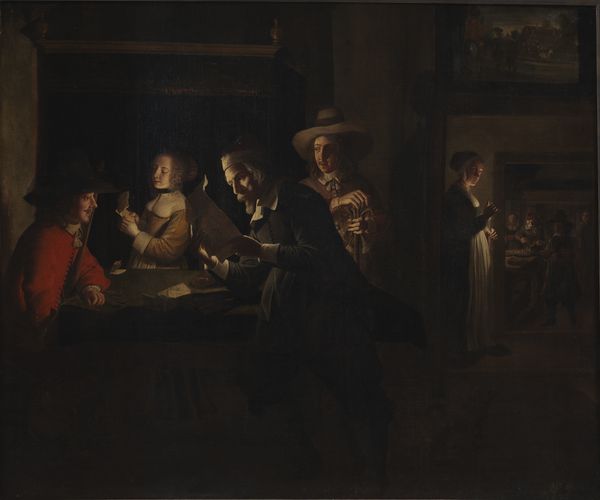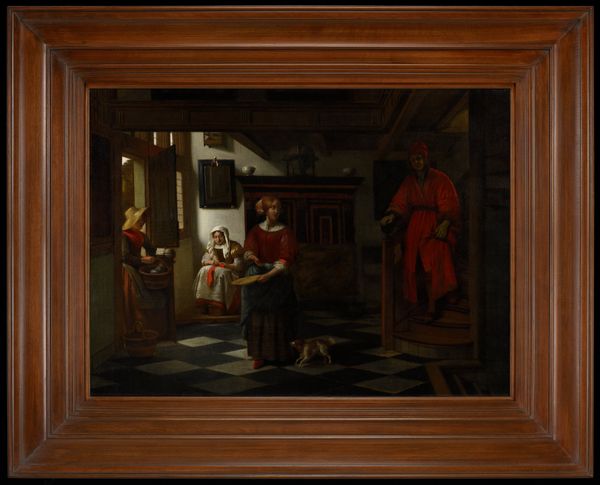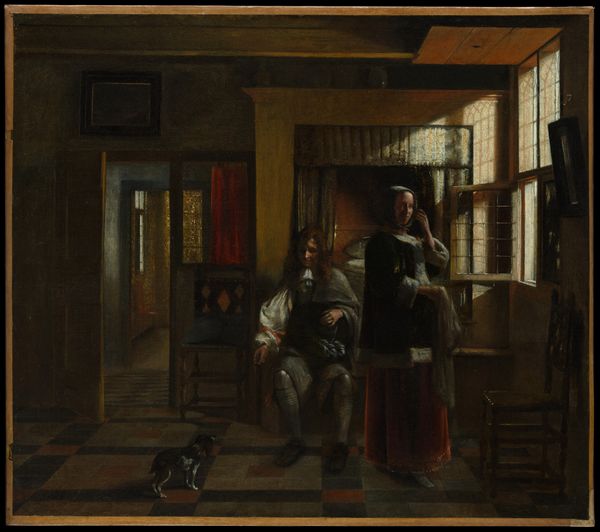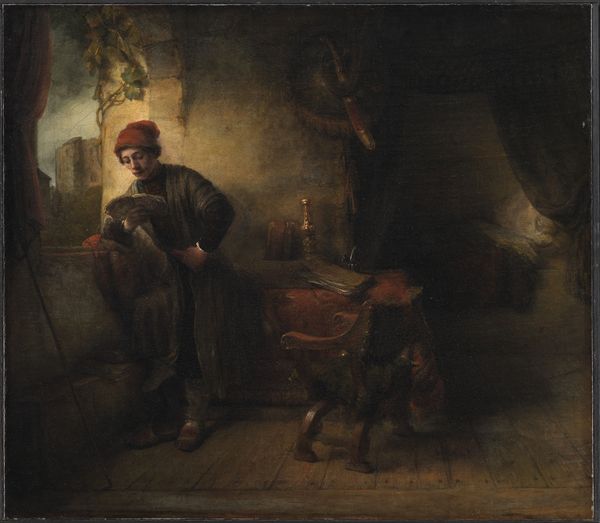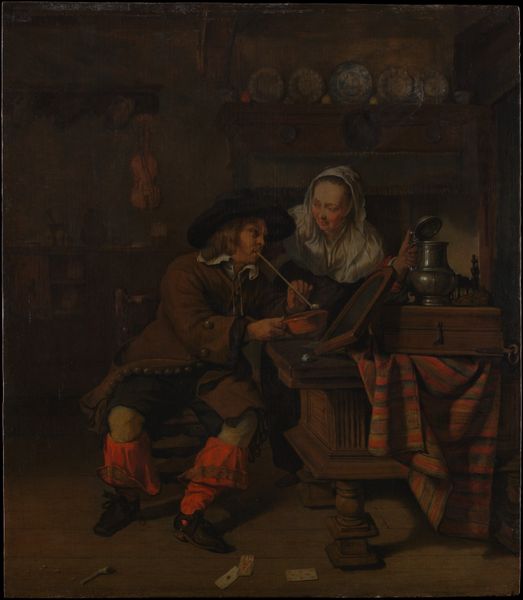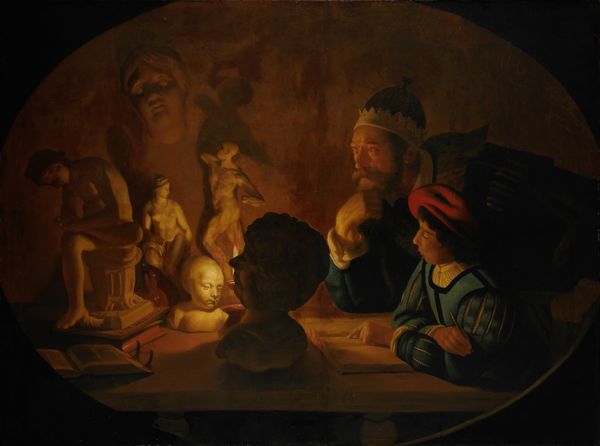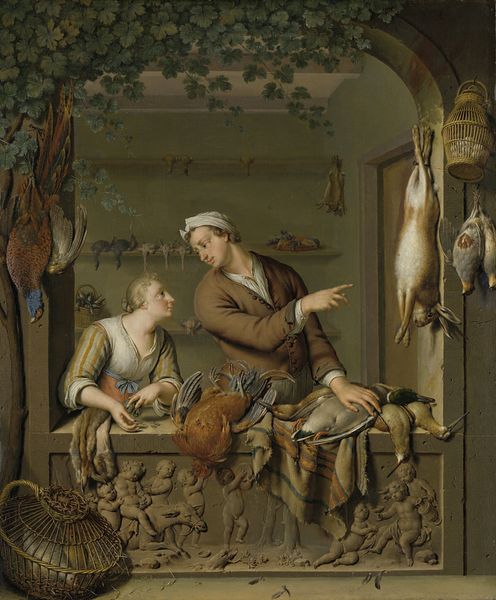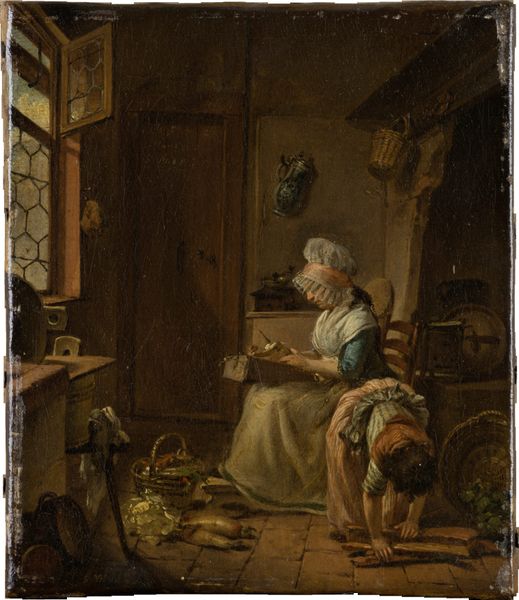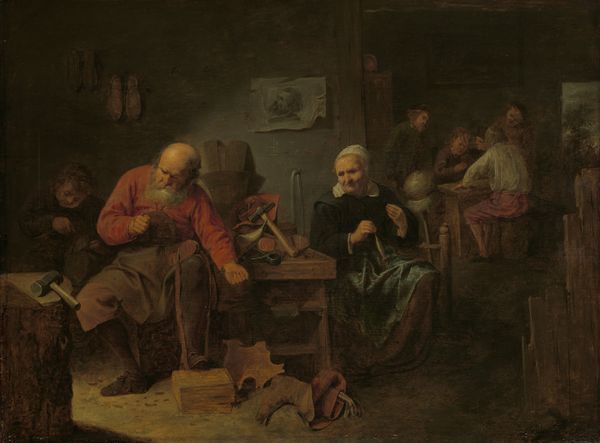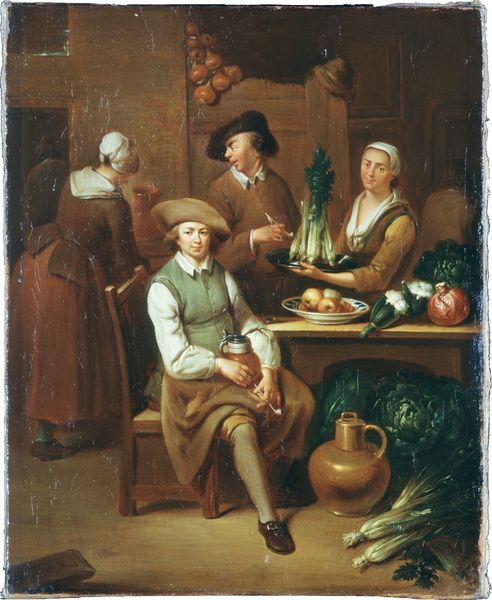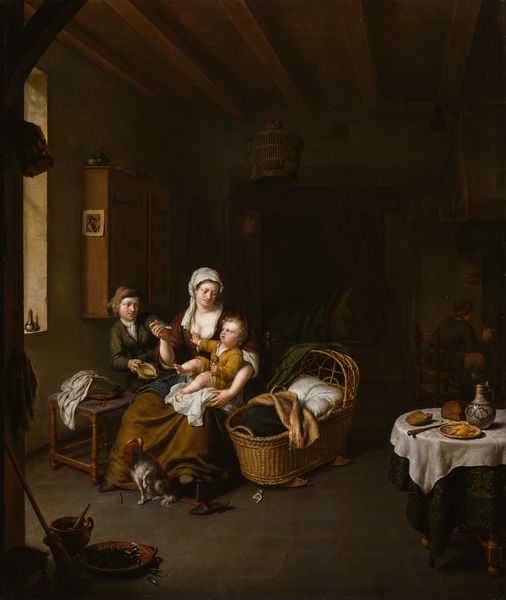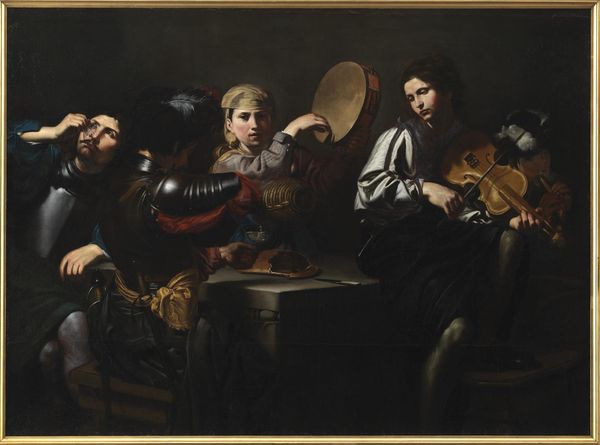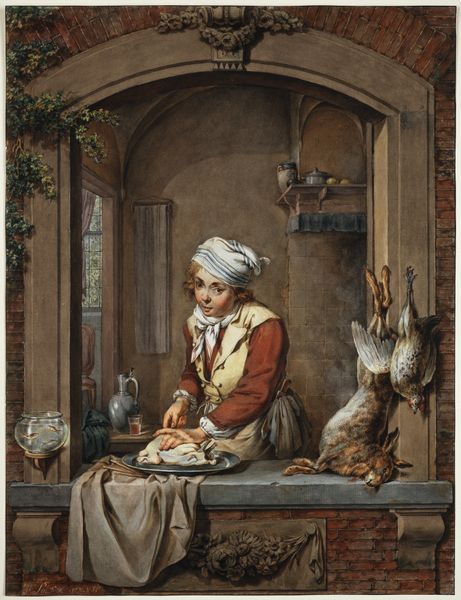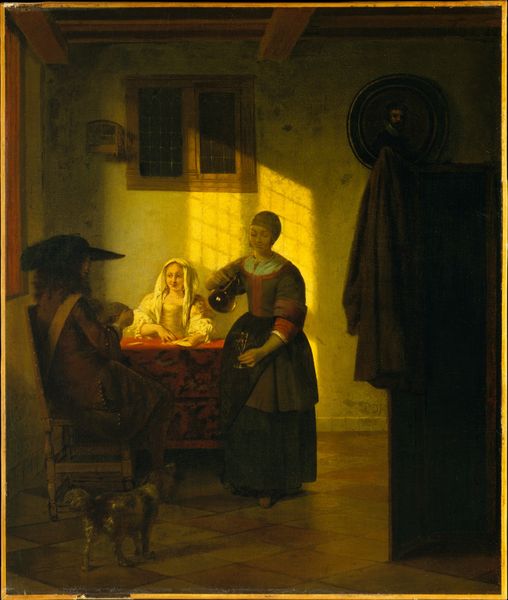
painting, oil-paint, wood
#
portrait
#
narrative-art
#
baroque
#
dutch-golden-age
#
painting
#
oil-paint
#
figuration
#
wood
#
genre-painting
#
history-painting
#
realism
Dimensions: 59.1 cm (height) x 48.7 cm (width) x 5 cm (depth) (Brutto), 41.5 cm (height) x 30.5 cm (width) (Netto)
Curator: Immediately, I feel enveloped by the domesticity, yet a certain… thickness to the air. It's dark but warmly so, do you feel it? Editor: Absolutely. Let's orient our listeners. We are looking at "Sending the Boy for Beer," a painting from circa 1655-1657 by Frans van Mieris the Elder, housed here at the SMK. It's oil on wood, which might contribute to that intimate feeling. A glimpse into a Dutch Golden Age home, no? Curator: Golden maybe in hue but consider those figures. Van Mieris, he gives them to us plain, real. A rosy-cheeked woman enjoying a meal while the menfolk…well, one of them is on an errand, perhaps not so eagerly given his stance, yes? And consider the vegetables there. They remind us of daily living. It pulls me right in to a world of simple survival, with complex social structures. Editor: You’re right, this is genre painting elevated. It seems a clear-eyed depiction of 17th-century life. What resonates with me is Van Mieris’ commitment to realism. But I have a question, why send the boy? Are there suggestions of what sort of society it could have been where he’s being sent? Is there potential drama? Curator: Ah, the unasked questions! Maybe this little tableau mirrors how boys, not men are sent to handle those errands which hold little authority. This creates a familial tableau, right, rather than that social power imbalance? Do you see? Perhaps what is happening is much more commonplace that how much we see and how much our experience changes. I imagine myself as a child like him, maybe feeling resentful or misunderstood and then…nothing. Editor: Indeed. Frans Van Mieris invites our reflection. There’s so much socio-economic data, social commentary. What appears quaint, hides questions. Curator: So, the darkness is the drama then. And not even very big, which gives all the comfort to me! I walk away grateful I understand a little bit more, what about you? Editor: I walk away more grateful and cautious for social constructs. Thank you!
Comments
statensmuseumforkunst almost 2 years ago
⋮
The university town of Leiden came to name a school within 17th century Dutch painting founded by the Rembrandt student Gerrit Dou (1613-1675). The Leiden School is known for its “fine” painting, a very sophisticated and time-consuming style of painting where the brushstrokes are barely visible. These paintings are usually quite small and often depict scenes from everyday life. Frans van Mieris the Elder studied under several masters, but the true foundations of his long career were laid at Gerrit Dou’s studio. He was received as a master with the Leiden Guild of Painters in 1658, but by then he had already been selling his paintings for some time. Van Mieris specialised in painting scenes from everyday life. Unlike Dou’s dark interiors, his scenes take place within comfortable, light-filled rooms. Like those of Dou, van Mieris’ paintings went for some of the highest prices on the Dutch art market. His pictures were still highly sought-after up through the 18th century, so it is no wonder that Sending the Boy for Beer was among the purchases made by the Danish king Frederic 4 (1671-1730) in Augsburg in 1709.
Join the conversation
Join millions of artists and users on Artera today and experience the ultimate creative platform.
